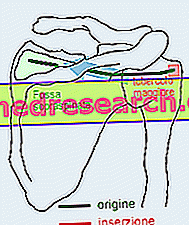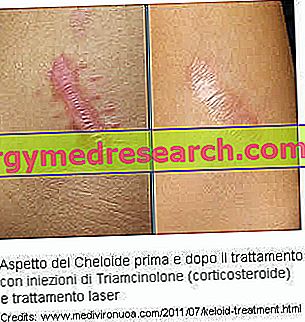What is allergic conjunctivitis?
Allergic conjunctivitis is an inflammatory process affecting the conjunctiva induced by any allergen, whether this is a chemical (eg contact lens solutions) or natural (eg pollen).

Although a truly effective drug for treating it has not yet been identified, allergic conjunctivitis can be prevented by adopting specific precautionary measures of a hygienic-behavioral nature. To reduce the characteristic symptoms - such as itching, eye redness, light intolerance and palpebral swelling - the antihistaminic and corticosteroid drugs (eye drops / ophthalmic ointments and tablets) are undoubtedly the most indicated.
deepening
Being an allergic form, this type of conjunctivitis also represents an immune response, abnormal and exaggerated, of the organism in contact with an allergen.
The symptoms produced by allergic conjunctivitis begin after "the erroneous recognition" of pollen, dust or other elements by the immune system, which identifies them as substances potentially dangerous for the body.
Ferocious pruritus, abundant lacrimation and effective eyelid edema are due to the release of histamine and other vasoactive substances produced by mast cells (located at the conjunctival level). Taken together, these molecules stimulate the dilation of blood vessels and irritate nerve endings; an overproduction of lacrimal secretions is thus favored.
Types of allergic conjunctivitis
There are numerous types of allergic conjunctivitis, distinguished by:
- Onset mode and characteristic symptoms: acute and conical conjunctivitis
- Causative cause: seasonal allergic conjunctivitis, perennial, atopic, gigantopapillary, from contact
... ACCORDING TO THE BEGINNING SYMPTOMS
First of all, two main forms of allergic conjunctivitis must be distinguished:
- ACUTE: it is an orthicarial form (it causes symptoms like hives and intense and ferocious itching) which is distinguished by an evident palpebral swelling. Normally, the symptoms subside in a relatively short time.
- CHRONIC: the symptoms are less impetuous but tend to persist for long periods. At the conjunctival level, the patient experiences widespread itching, photophobia, redness and local irritation. When you succeed in isolating the allergen, it is essential to avoid contact as much as possible; if this is not possible, to reduce symptoms it is advisable to use antihistamine drops and vasoconstrictors.
... BASED ON THE CAUSE
There are also other subtypes of allergic conjunctivitis, differentiated according to the causal agent (allergen) involved:
- SEASONAL ALLERGIC CONJUNCTIVITY: always associated with hay fever, this type of conjunctivitis is more plausible explanation in pollen allergy. It is characterized by transient episodes of hyperemia (ocular redness), abundant lacrimation, and palpebral edema. The cornea is not affected.
- ALLERGIC CONJUNCTIVES PERENNIAL: the characteristic symptoms occur throughout the year, in response to different types of allergens such as dust mites, pet epithelium (the so-called allergy to dog or cat hair ), molds etc..
- ATOPIC ALLERGIC CONJUNCTIVITY: although relatively rare, this type of conjunctivitis is typical of young male adults. The disorder involves the eyelids that appear chapped, thickened and covered with small crusts. In general, allergy is not limited to the eye: even the lateral folds of the neck and the antecubital cavity (small fossa present in the elbow joint) may be involved.
- GIGANTOPAPILLARY ALLERGIC CONJUNCTIVITY: it is a conjunctival allergy typical of contact lens wearers or ocular prostheses. Even asthmatic patients, suffering from hay fever or who have a certain sensitivity to allergens of animal origin, have a rather high risk of developing gigantopapillary conjunctivitis. The characteristic symptoms of onset are: irritation, photophobia, itching, purulent mucous secretions and intolerance to contact lenses.
- CONTACT ALLERGIC DERMATOCONGIUNTIVITE: it is essentially caused by a hypersensitivity reaction to some eye drops or to certain substances contained in a cosmetic. Typically, this form of conjunctivitis struggles to improve even with normal antihistamines. To avoid relapses, it is essential to avoid any possible contact with the allergen.
Signs and symptoms characteristic of allergic conjunctivitis | |
Signs
| Symptoms
|



